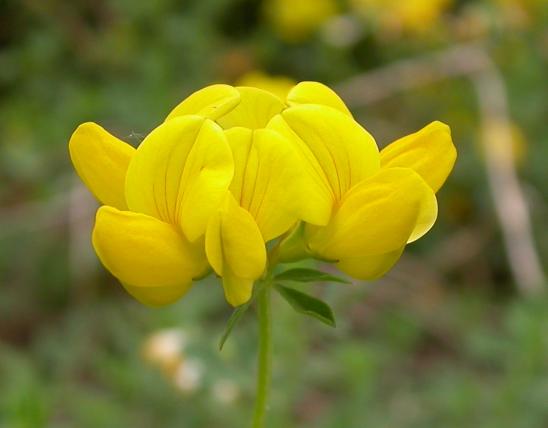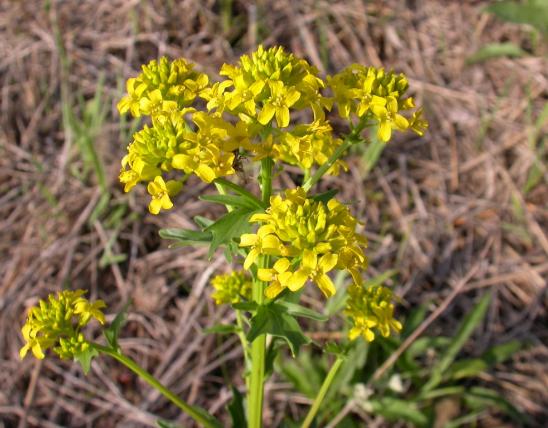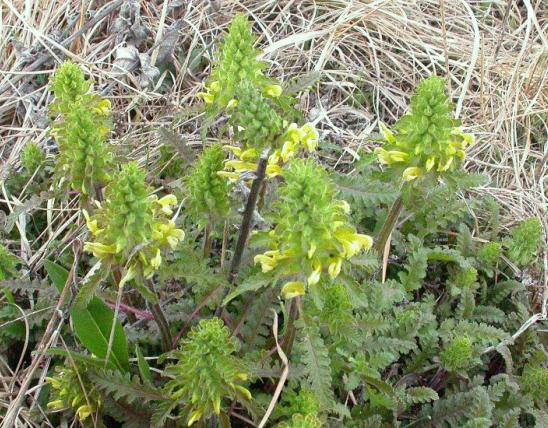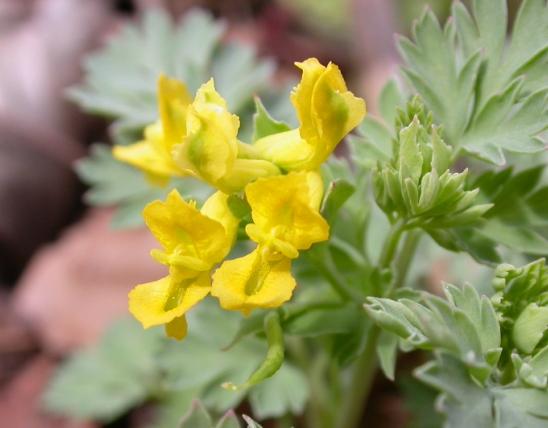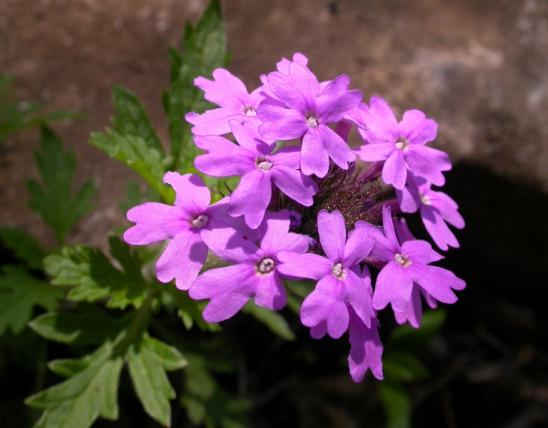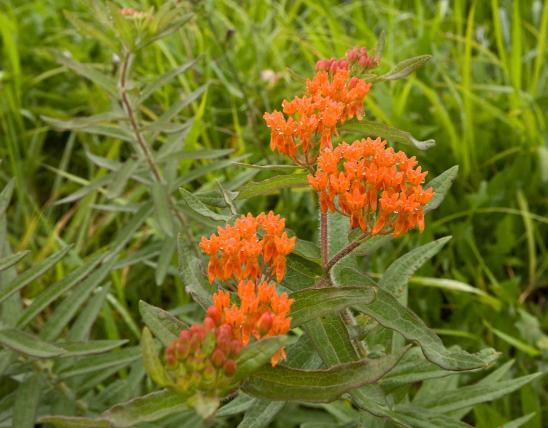
Hoary puccoon's small, bright orange flowers arise on spirally condensed stalks that uncoil and elongate as more flowers open toward the tip. Many stalks arise from one root system; this plant begins flowering very low to the ground. Flowers are many, from coiled flowering stalks; each flower is tubular, though this is hardly visible, with 5 lobes, orange yellow, rarely pale yellow. Blooms March–June. Leaves are inconspicuous at flowering time, alternate, lanceolate, pointing upward, very hairy. The fruits are small nutlets that are shiny white to yellowish brown.
Similar species: There are four species of Lithospermum in our state. Three species are called "puccoons" and have showy yellow flowers, while the fourth is called a "gromwell" and is much less showy:
- Yellow, or fringed puccoon (L. incisum) has flowers lemon yellow or bright yellow, with the lobes distinctively toothed, fringed, or wrinkled (not rounded). Its leaves are much narrower (linear). Scattered in Missouri, mostly in the western half, in glades, prairies, pastures, roadsides.
- Plains, Carolina, or hairy puccoon (L. caroliniense) is similar to hoary puccoon, but its foliage is rough-hairy with stiff hairs (not softly hairy) and it has larger flowers. It is usually taller and more robust than hoary puccoon. Widely scattered in Missouri, mostly in the Bootheel, in sand prairies, other prairies, lake edges, pastures, levees, and roadsides, preferring sandy soils.
- American gromwell (L. latifolium) is uncommon in the northern half of Missouri. The tube-shaped flowers are pale yellow to white to greenish white and are solitary, arising in the axils of the upper leaves. The leaves can be more than 5 inches long and 2 inches wide. It is unlikely to be confused with the other Missouri members of this genus. It is not very showy, and most people don't pay attention to it.
Height: 6–12 inches.

Statewide, except for the lowlands of southeast Missouri.
Habitat and Conservation
Occurs in glades, savannas, upland and loess hill prairies, ledges and tops of bluffs, openings of moist upland forests, dry upland forests, and sometimes along edges of lakes. Also found in pastures, along railroads and roadsides, and in open, disturbed areas.
It can be a showy specimen for native plant gardens.
Human Connections
Hoary puccoon and other members of its genus have a long history of medicinal and ceremonial use by various Native American cultures. Asian cultures have used related plants in genus Lithospermum in similar ways. The red or purple dye made from the roots has been used to color fabrics, as body decoration, and for other uses.
Today, Missouri species of Lithospermum are mainly used as native garden flowers. Never dig plants from natural habitats. Purchase them at reputable native plant nurseries.
There is poetry in many wildflower names. "Hoary" means gray or white with age, and this plant certainly does have such hairy foliage. "Puccoon" is from the Powhatan/Virginia Algonquian word "poughkone" and refers to plants that yield a purple, red, or yellow dye.
Considering that "puccoon" pretty much means "plant for making dye," there are many different kinds of wildflowers and herbs commonly called "puccoon" that have little relationship to one another. For example, bloodroot, in a completely different family, has been called "Canadian puccoon" in some regions. The only similarity is that both plants have been used to make dye.
One of the cooler-sounding fancy botanical terms is "scorpioid raceme," which is the technical way of describing the flowering stalk and blooming pattern of puccoons. A "raceme" is a flower cluster where the youngest flowers/buds are at the outer tip of the cluster, and the flowers that open first are lowest on the flower cluster. "Scorpioid" means that the flower cluster is curled at the outer tip like the tail of a scorpion. Thus the flower cluster gradually uncurls as the flowers progressively open. Many other members of the borage family share this trait.
Ecosystem Connections
A wide variety of bees and butterflies harvest nectar from these showy flowers, pollinating them in the process. Some species of puccoons, however, bear two types of flowers, with some flowers cross-pollinating with the aid of insects, and others completely self-pollinating (cleistogamous; these flowers never open, yet produce viable seeds anyway).
The foliage contains toxic alkaloid chemicals, which may give it some protection from herbivore grazing.





























